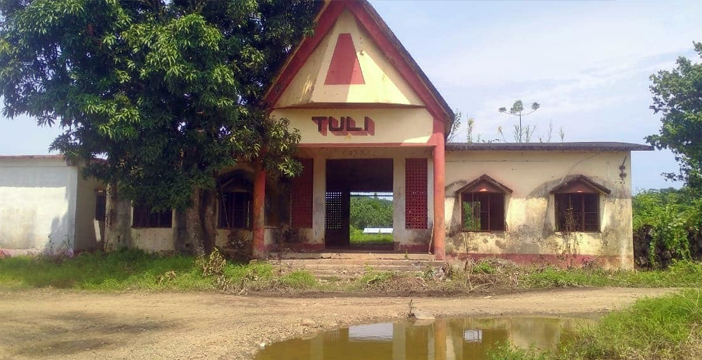The Business Association of Nagas (BAN) has submitted a representation to the 16th Finance Commission, calling for immediate and substantial investments in infrastructure to unlock Nagaland’s economic potential. The representation highlighted critical infrastructure needs, including improving road connectivity across districts, upgrading Dimapur Airport and Tuli Railway, enhancing the Ganeshnagar SEZ, and establishing an exhibition and convention center in Dimapur. Additionally, BAN advocated for the construction of a dry port in Dimapur to strengthen trade with Southeast Asia, boosting power generation to support industry, and expanding surveillance infrastructure for security.
BAN also called for sector-specific grants and state-specific financial assistance to address these gaps. They believe that these improvements are essential for Nagaland to play a stronger role in India’s economic strategy and regional development.
The original “Representation to the 16th Finance Commission on Nagaland’s Economic and Infrastructure Development Needs” submitted by the Business Association of Nagas (BAN) titled “Nagaland’s Economic future hinges on urgent Infrastructure Development” is reproduced below:
INTRODUCTION
Economic development is intrinsically tied to infrastructure development. Despite the state’s rich natural resources and strategic location, the lack of basic infrastructure has limited our economic growth. Addressing these gaps will not only uplift the state but also contribute to India’s economic and strategic interests.
Key Issues
1. Lack of Comprehensive Infrastructure
The road condition is very poor across the state. There’s huge unreliable power supply, and inadequate communication facilities. The Dimapur-Kohima road stands out as the best in Nagaland, underscoring the poor state of road infrastructure across the rest of the state. This severe disparity hampers equitable growth and poses major barriers to development in both rural and urban areas. In many places, roads are virtually nonexistent, a critical issue that demands immediate attention.
Request: We urge substantial investment in road development across all districts, ensuring both urban and rural regions have high-quality, all-weather roads to support equitable growth.
2. Condition of Dimapur Airport & Railway
Nagaland holds significant strategic and economic importance, but the state’s potential is hindered by neglected infrastructure. For instance, the Tuli and Dimapur railway stations, which generate substantial revenue for Indian Railways, remain overlooked in terms of development. Tuli, in particular, faces severe infrastructure neglect despite being an important industrial area, while Dimapur is a critical transit hub for the entire region.
Dimapur Airport, one of the oldest airports in the Northeast, similarly lacks the upgrades needed to serve the region’s current business and travel demands. Its outdated facilities limit Nagaland’s connectivity with the rest of India and international destinations, directly impacting trade and tourism. Establishing an international airport in Dimapur is crucial to realizing Nagaland’s economic ambitions and facilitating regional business growth. To fully integrate Nagaland into India’s economic framework, the 16th Finance Commission’s support is essential. We strongly urge sector-specific funding to address these infrastructure challenges.
Request: An upgrade to international standards, transforming Dimapur Airport into a hub for regional and international business travel, along with a cargo facility to support both national and international logistics needs. The Tuli Railway should be upgraded urgently to exploit the vast natural resources available in the region for linking it to the rest of the country.
3. Ganeshnagar Special Economic Zone (SEZ)
Though established with the vision to foster economic growth, the SEZ at Ganeshnagar, Dimapur lacks proper road connectivity, deterring companies from setting up operations. SEZ infrastructure needs significant enhancement to attract investment.
Request: Comprehensive infrastructure funding to upgrade the SEZ, particularly in road connectivity, water supply, and power.
4. Development of Border Roads for Trade Centers
Nagaland has four border trade centres: Longwa (Mon), Avangkhu (Phek), Pangsha (Tuensang), and Mimi (Kiphire), all lacking proper road infrastructure. Without roads connecting these centres, especially on both the Indian and Myanmar sides, the potential for cross-border trade remains untapped.
Request: Prioritizing investment in road development to connect these centers and making them fully operational as trade hubs is essential. A dialogue between the Indian government and Myanmar’s counterpart to build these border centers and corresponding roads within each country would significantly boost the economies of both nations.
5. Need for Exhibition and Convention Centres
Nagaland lacks a single large-scale exhibition and convention centre. Such a facility would provide a venue for national and international business collaborations, essential for economic development.
Request: Funds for establishing an Exhibition and Convention Centre in Dimapur to host trade fairs and business conferences.
6. Absence of a Dry Port
As a landlocked region, Nagaland depends heavily on road transport for imports and exports, making the establishment of a dry port essential for efficient cargo handling and streamlined trade. A dry port in Dimapur would not only enhance trade with neighbouring states like Assam, Arunachal Pradesh, and Manipur but also capitalize on the strategic Dimapur corridor.
With the planned Trans-Asian Highway passing through Nagaland, connecting India to Southeast Asian countries, a dry port would serve as a vital trade and logistics hub. This aligns with the Act East Policy championed by the Hon’ble Prime Minister of India, transforming Nagaland into a gateway for regional and international trade and shaping the economic landscape across the Northeast. This infrastructure would support India’s ambitions for closer economic integration with Southeast Asia, reinforcing Nagaland’s role as a critical link in this broader economic vision.
Request: Establish a dry port in Dimapur to boost regional trade, benefiting Nagaland and the Northeast at large.
7. Power Generation and Supply
The peak demand for power in whole of Nagaland is 210 MW, while only 194 MW is met, with Nagaland generating just 37.5 MW. To support projected industrial growth, it is crucial to expand our power generation capacity, including hydro and solar plants.
Request: Funding for renewable energy projects, especially hydro and solar power plants, to make Nagaland self-sufficient in energy.
8. Surveillance for Business Security
Safety and security are foundational to fostering business growth, attracting investments, and enhancing public well-being. Currently, surveillance infrastructure across Nagaland’s districts, with the partial exception of Kohima, remains significantly underdeveloped. Expanding surveillance camera coverage would provide a host of benefits beyond safety, such as improved law enforcement, crime prevention, and more efficient traffic management, which would lead to a safer and more organized environment for both residents and businesses.
For investors, robust surveillance systems enhance confidence by signalling a commitment to security and operational stability. For local authorities, these systems would enable real-time monitoring, quick response capabilities, and data collection to optimize city planning and resource allocation. Additionally, surveillance cameras can aid in crowd control during public events, facilitate disaster response by monitoring key areas, and support tourism by promoting a perception of safety. Implementing such infrastructure across all district headquarters would create a secure and business-friendly environment, a critical step in bolstering Nagaland’s appeal as an investment destination.
Request: State-specific funds for installing surveillance cameras in key business hubs, covering an average density of 40 cameras per sq. km to boost security in all district headquarters.
9. Untapped Natural Resources
Nagaland is endowed with valuable natural resources, including limestone, coal, timber, bamboo, stone and crude oil, offering significant economic potential. However, the lack of reliable road connectivity severely limits the ability to extract, transport, and fully utilize these resources.
Poor infrastructure creates logistical challenges, raising costs and reducing the feasibility of commercial operations in these sectors.
Improved road networks would open up access to resource-rich areas, enabling efficient extraction and transportation, boosting local industries, and attracting private investment. By addressing these connectivity issues, Nagaland could harness its resource wealth to drive economic growth, create jobs, and increase revenue, benefiting the state and contributing to national energy and resource security. Developing these infrastructure links would also support ancillary industries, such as processing plants and logistics services, creating a more sustainable and diversified economy in Nagaland.
Request: Allocate funds for developing roads to resource-rich areas, allowing sustainable extraction and transport.
Proposed Solutions :
1. Sector-Specific Grants for Infrastructure
We request sector-specific grants for critical infrastructure in roads, power, and communication to bridge the developmental gap in Nagaland.
2. Special Financial Assistance
Nagaland faces unique challenges, including long-standing political negotiations and their consequences on development. We request special financial aid to address these challenges.
3. Skill Development Funding
Investment in skill development is essential to equip our workforce with the skills required for the industries we aim to attract.
4. State-Specific Grants
We propose state-specific grants for:
Security infrastructure in business hubs
Development and operationalising of the four border trade centers
Establishing a National Trade and Exhibition Center
Construction of a dry port to facilitate trade logistics.
Conclusion
For India to achieve its vision of becoming a top global economy and a developed nation, every state—including those in the Northeast like Nagaland—must be an integral part of the country’s development strategy. Nagaland, with its abundant resources and strategic location, has immense potential to contribute to India’s economic progress. However, this potential remains largely untapped due to critical infrastructure gaps.
By prioritizing sector-specific and state-specific funding for Nagaland, the 16th Finance Commission can help bridge these gaps. Investment in roads, power, trade centers, and connectivity will empower Nagaland to play a more active role in the national economy, contributing to India’s resource security, trade capabilities, and regional growth. Inclusive development in Nagaland will not only enhance the state’s economic contributions but will also foster growth and stability across the entire Northeast. We urge the Commission to recognize these needs and support Nagaland’s infrastructure development, aligning with India’s long-term economic goals and strengthening its journey towards becoming a developed nation.



